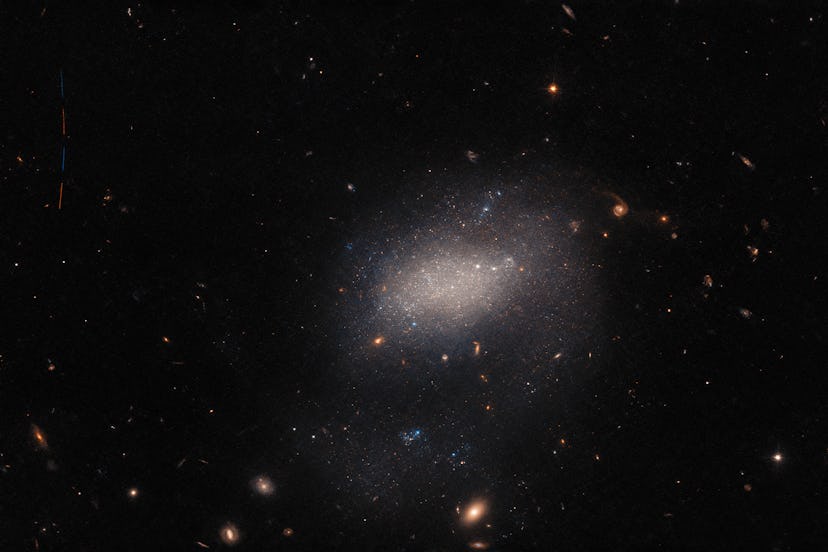New NASA Photo Reveals The Weirdest Kind of Galaxy
NASA released a new photo taken from the Hubble telescope that looks like a space cloud but it's way cooler.

For us Earth-dwellers, looking at the beautiful photos that the James Webb Space Telescope (JWST) and the Hubble might be the closest we ever get to space, no matter how many commercial space flights take off over the next few years. And a recent photo released by the European Space Agency (ESA) and NASA reveals a beautiful dwarf irregular galaxy over 30 million miles away — with a lot of other delights.
Here’s what to know about the photo released on January 20th and what you are looking at within it.
Dwarf Irregular Galaxy, Simply Explained
According to NASA and the ESA, you’re looking at a small galaxy that is around 30 million light-years from Earth in the Virgo constellation. Called UGC 7983, the small cluster in the center of the is a dwarf irregular galaxy.
As ESA explains, a dwarf irregular galaxy is a name given to galaxies with a specific shape — as they don’t have a distinctive shape like a typical galaxy.
“Irregular dwarf galaxies are often chaotic in appearance, with neither a nuclear bulge — a huge, tightly packed central group of stars — nor any trace of spiral arms — regions of stars extending from the center of the galaxy,” NASA and ESA share.
But that’s not the only thing you’re looking at in this photo. The image also shows an asteroid, which the ESA calls an “astronomical interloper.”
In the top left corner of the photo, there are four small lines that stream through the sky. That’s the asteroid!
“The asteroid’s trail is visible as four streaks of light separated by small gaps,” ESA explains. ”These streaks of light represent the four separate exposures that were combined to create this image.”
To read more about the dwarf irregular galaxy and the asteroid on NASA’s blog.